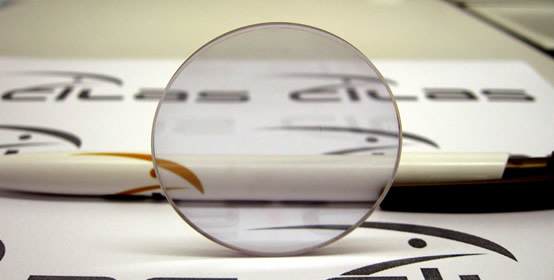
Fans of Star Trek may remember a plotline from the movie Star Trek IV: The Voyage Home. The crew of the Enterprise goes back in time to 20th century Earth to rescue some Humpback Whales, which had gone extinct in the present Star Trek timeline.
Enterprise engineer Scotty needs some materials in order to construct an enclosure in which to transport the whales. The only problem is that he has no money or goods with which to trade for or buy them. So Scotty turns to his futuristic knowledge, agreeing to give a future technology to a 20th century engineer in exchange for the materials he needs.
The future tech that Scotty trades in order to save the whales: Transparent aluminum. When the Star Trek Movie was made in 1986, transparent aluminum was a science fiction concept worthy of inclusion in a movie series like Star Trek. But amazingly, life has imitated art, as transparent aluminum is now a real product.
ALON is the copyrighted trade name for AlON, which stands for aluminum oxynitride, which is the compound responsible for transparent aluminum. Technically, ALON isn’t transparent aluminum, though – It’s a ceramic compound forming a crystalline structure of aluminum, oxygen and nitrogen.
ALON is four times as hard as fused silica glass, three times as strong as steel of a similar thickness, and remains solid in temperatures of up to 2190 degrees Fahrenheit.ALON is transparent visible, infrared and near ultraviolet regions of the spectrum, and is the strongest transparent ceramic commercially available.
Interestingly, it’s possible for a Star Trek writer to have had some knowledge of the possibility of real transparent aluminum, although we have no way of knowing whether or not they did. The first patent issued by the US Patents Office in connection was issued to JW McCauley in 1980, a patent on the production of aluminum oxynitride in crystalline form.
Two more patents connected with aluminum oxynitride were issued in 1984 and 1988, with final patent being issued in 1993, all to different parties. AlON initially was commercialized by the Raytheon Company, a US defense contractor. Raytheon used AlON in a number of military applications for several years, before transferring AlON to Surmet in 2002, a corporation which has since held the ALON trademark and manufactured ALON for a variety of different uses.
ALON is harder and more durable than any other transparent material on the market. As such, its combination of visibility and strength make it an ideal choice for bulletproof and impact resistance viewing windows. Many of the applications involving ALON in this regard are military in nature.
ALON holds a significant advantage over traditional bulletproof glass, as ALON is every bit as strong if not stronger while being considerably thinner and lighter. An ALON transparent armor panel only 1.6 inches think is capable of blocking a .50 BMG armor piercing round, a round that is capable of piercing a 3.7 inch section of glass laminate, the traditional bulletproof glass.
The cost of ALON (in comparison to traditional bulletproof glass) is high, as the manufacturing process is resource intensive and precise. As such, ALON is mostly confined to military applications. Such applications include bulletproof windows and armor, windows covering the heads of the sensors of missiles, and lenses for a number of battlefield optics.
Additional uses for ALON include windows for laser communication, some semi-conductor related tools, and as sensor components.
ALON being ‘predicted’ by Star Trek is a fascinating case of fiction showing us a possible future that becomes a reality. And the really fascinating thing is that it’s not the only time that Star Trek has done so.
Look no further than cell phones. In the original Star Trek, made in 1966, the crew of the Enterprise had ‘communicators’ by which they could remotely speak to one another. The communicators even had the flip feature which would become familiar to us all as flip phones. Today, the idea of a cell phone may seem obvious to us all. But most science fiction of the past lacks that cell phone concept.
Another Star Trek technology which became reality is the phaser, the go-to weapon for Captain Kirk and his crew. Frequently, phasers were set to stun, while in corresponding reality no such non-lethal weapons existed. Cut forward to the future, and a variety of tasers and stun guns exist, used by law enforcement and others.
Another handful of Star Trek technologies seems to be on the verge of becoming reality in the near future, such as the universal translator device.
When thinking about transparent aluminum, cell phones, tasers or other current technology previously featured in Star Trek, or considering tractor beams and other future tech still beyond our reach, the question becomes: Was Star Trek predicting the future? Are we making these advancements because Star Trek showed us a future possibility to strive toward? Maybe a little of both.